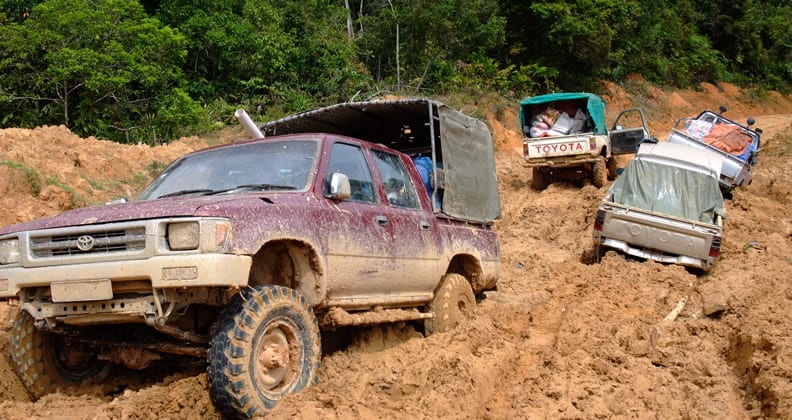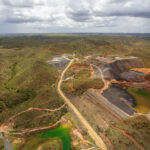Researchers at Curtin Malaysia are taking an innovative approach to road making, using bacteria as a ‘biocement’.
It could be the answer to Borneo’s perennial problem of bare-earth rural roads turning to mush, to the extent where they are virtually impassable during the wet season.
The widely practised solution now is to apply a surface course of emulsified asphalt, but such surfaces are soon potholed from torrential rains and continued heavy usage. The innovative new approach being developed uses a layer of biosandstone created using a bacterial agent, which will keep the roads dry and resilient to wear and tear.

The innovation will be a first for Borneo, and takes into account the unique characteristics of the region’s terrain, soil and climate, as well as the durable and weather-resistant characteristics of sandstone. The bacteria, which acts as the hardening agent through the natural process of ‘biocementing’, will be produced in large scale at the RM60 million Pilot Plant Facility funded by the Sarawak State Government on the Curtin Malaysia campus.

While the efficacy of the technology will be first tested on bare-earth rural roads, the research team will try to develop it as a solution for other types of roads.
The project is a collaboration between Curtin Malaysia and the Sarawak Public Works Department, with RM1.2 million in funding provided by the Sarawak Government in early 2018.
It’s one of several engineering research projects where Curtin Malaysia is helping the state government develop Sarawak’s bioeconomy.
Professor Lau Hieng Ho, Dean of Curtin Malaysia’s Faculty of Engineering and Science, says their program of research is driven by the needs of local industry and community.
“Our research focus is on engineering solutions for sustainable and renewable development, in areas that are not only theoretically complex, but also important and relevant to local industry and communities. In particular, our research focuses on engineering problems persistent in the local community such as wastewater treatment and disposal, and utilising waste from the palm oil and coal power industries in construction materials,” Lau says.
Engineering research at Curtin Malaysia
Curtin Malaysia’s engineering-related research is focused on three key areas: digital innovations, infrastructure development and bioprocess. They welcome prospective research students, scientists and industry to collaborate on a range of projects.



